#culturalart
Explore tagged Tumblr posts
Text





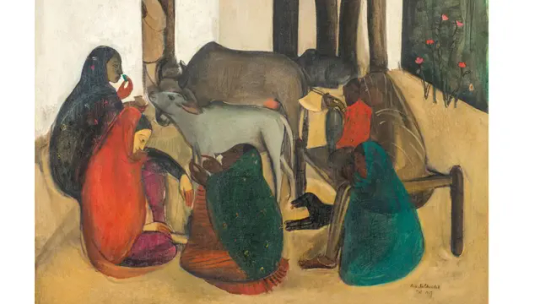
art by amrita sher-gil
different art so y'all don't get drowned out by my chughtai glazing LMFOAOAOAO
#aesthetic#art#southeast asia#amrita sher gil#female beauty#female artists#female artwork#artworks#artwork#painting#paintings#a e s t h e t i c#islamic#cultural#culturalart#religious art#culture
28 notes
·
View notes
Text






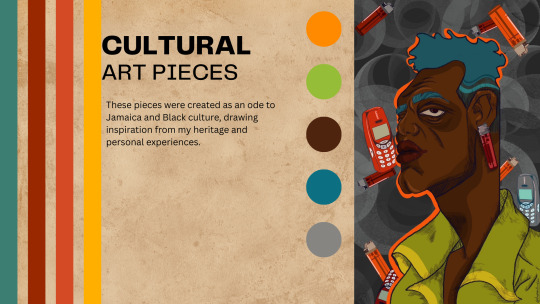

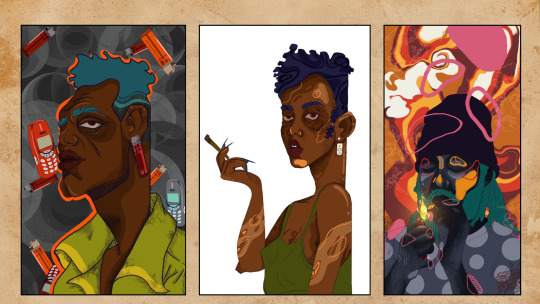



✨🎨 Bringing my world to life, one brushstroke at a time! From vibrant portraits to cultural snapshots and a peek into my children's book illustrations—this is my creative space. 🌍💛 Would love to connect with other artists and art lovers! Let me know which piece speaks to you the most. 🖌️✍🏾 #JamaicanArt #BlackArtists
#ArtPortfolio#DigitalArt#Painting#JamaicanCreatives#CulturalArt#PortraitArt#CaribbeanArt#IndieIllustrator#ChildrenBookIllustration#SupportBlackArtists#BlackExcellence#VibrantColors#ArtLover#CreativeJourney#IllustrationCommunity#tiapaintsnxtdoor
5 notes
·
View notes
Text

Creatuanary 2025 Day 17-18, Huli Jing and Kitsune Two versions of the same creature from different regions, fox spirits are smart and mischievous. Some say the Huli Jing traveled to the other regions and that is where their lore began.
As these creatures are artistically extremely similar, I decided to draw them in the same image
#HuliJing#Kitsune#FoxSpirits#MythicalCreatures#NineTails#EastAsianMythology#ShapeShifter#Folklore#FantasyArt#LegendaryFoxes#DigitalArt#OriginalCharacter#ClipStudioPaint#Creatuanary2025#OneDayOneCreature#Creatuanary2025Day17#NoAI#NotAIGenerated#DigitalPainting#ArtistOnInstagram#AsianFolklore#FantasyIllustration#SpiritAnimals#IllustrationArt#TraditionalClothing#CreativeChallenge#CulturalArt#FoxEars#ArtCommunity#RedAndWhitePalette
5 notes
·
View notes
Text
youtube
#BlackSuperman#SupermanFanArt#DCComics#ComicBookArt#Afrofuturism#HeroicArt#SuperheroAesthetic#AlternativeSuperheroes#SupermanReimagined#BlackExcellence#Art Style & Medium Hashtags:#PopArt#StreetArt#ComicArt#MarkerArt#HandDrawn#IllustrationDaily#TraditionalArtwork#VibrantColors#BoldLines#UrbanAesthetic#Themes & Cultural Hashtags:#BlackArtistsMatter#BlackArtMatters#RepresentationMatters#AfrocentricArt#PowerfulImagery#StrengthAndResilience#AmericanIdentity#CulturalArt
3 notes
·
View notes
Text

Maratha Valor Meets Modern Art
Here's a striking piece that captures the spirit of the Maratha warriors, blending tradition with a modern touch. This artwork features a Maratha warrior in iconic attire: the saffron turban, detailed armor, and those fierce, determined eyes that speak volumes of bravery and resilience. 🌄⚔️
The background’s abstract strokes in deep reds and earthy tones add movement and life, bringing a historical story into a contemporary canvas. It’s a powerful tribute to Maratha heritage—bold, vibrant, and unforgettable.
Swipe for details, and feel the energy of Maratha culture come alive! #MarathaArt #ModernTradition #HeritageThroughArt #ArtOfWar #BoldAndBrave
#MarathaArt#ModernArt#TraditionalMeetsModern#WarriorArt#CulturalArt#HeritageArt#MarathaWarrior#IndianArt#HistoricalArt#ArtOfIndia#BoldAndBrave#SaffronSpirit#AbstractBackground#ArtisticHeritage#ModernTradition#TumblrArt#ArtLovers#Artwork#VibrantCulture#WarriorSpirit
2 notes
·
View notes
Text

african art
3 notes
·
View notes
Text

Prayer #InvisibleArt #PencilDrawing #IslamicArt #MuslimArt #SpiritualArt #PrayerInArt #ArtisticFaith #ContemporaryArt #ConceptualArt #MinimalistArt #FaithInArt #ArtOfPrayer #CulturalArt #ArtisticExpression #ModernIslamicArt #SymbolismInArt #ArtWithMeaning #SpiritualJourney #ArtCommunity https://youtu.be/VM81wP-KBk4
#Prayer#InvisibleArt#PencilDrawing#IslamicArt#MuslimArt#SpiritualArt#PrayerInArt#ArtisticFaith#ContemporaryArt#ConceptualArt#MinimalistArt#FaithInArt#ArtOfPrayer#CulturalArt#ArtisticExpression#ModernIslamicArt#SymbolismInArt#ArtWithMeaning#SpiritualJourney
0 notes
Text
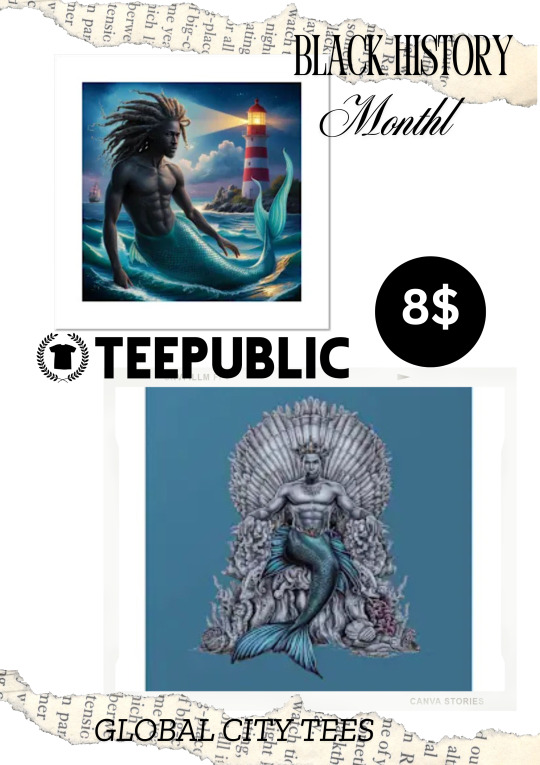

🌟 Celebrate Black History Month with Powerful Art! 🌟
This Black History Month, let's honor the beauty, strength, and legacy of African women through art! 🎨✨ Dive into the magic of our African American Mermaid Art Print—a stunning piece that blends culture, mythology, and empowerment.
🧜🏾♀️ Special Offer: 35% OFF! 📅 Sale Dates: Feb 17-23 💰 Now Only $8! 🛍️ Available exclusively at Global City Tees on TeePublic
Celebrate history, embrace culture, and add a touch of Black excellence to your space! Get yours before the sale ends! ❤️🖤💚
#BlackHistoryMonth#AfricanAmericanArt#MermaidMagic#WallArt#SupportBlackArtists#GlobalCityTees#AfricanWomenPower#MelaninMagic#BlackExcellence#Afrofuturism#MermaidArtPrint#MythicalMelanin#AfricanAmericanMermaid#BlackGirlMagic#WallArtDecor#MermaidsOfColor#RepresentationMatters#CulturalArt#HomeDecorLovers#ShopSmall
0 notes
Text












Tribal Masks
This vibrant art series reimagines tribal masks with bold colors, intricate patterns, and expressive forms. Each digital piece blends ancestral aesthetics with modern artistry, celebrating cultural heritage, symbolism, and primal expression.
#TribalArt#MaskArt#ContemporaryArt#DigitalIllustration#FolkArt#AbstractFaces#CulturalArt#ArtisticExpressions#ModernTribal#IndigenousDesign
0 notes
Photo

I visited the stunning Russian Orthodox Spiritual and Cultural Center in Paris, France, two years ago. It's amazing how architecture can foster cultural and spiritual growth. This building is a perfect example of that! The design perfectly blends traditional church architecture and modern cultural and religious elements.
#architecture#design#culturalcenter#heritage#modernarchitecture#history#innovation#religiousarchitecture#multifunctionaldesign#urbanplanning#symbolism#functionalarchitecture#tradition#modernity#art#architect#cultural#architecturephoto#culturalheritage#architecture_greatshots#architecturedose#multicultural#lovearchitecture#culturalfest#culturalart#france
1 note
·
View note
Text
Egyptian Symbolic Art | Ancient Hieroglyphic Pattern Tote Bag

Step back in time with this mesmerizing Egyptian hieroglyphic pattern, featuring symbols that represent the rich history and mysticism of Ancient Egypt. Ideal for lovers of ancient cultures, this intricate design can be personalized on a wide range of products, from phone cases to home decor. Whether you're looking to make a bold statement or connect with the timeless beauty of Egyptian symbolism, this hieroglyphic pattern is the perfect choice. Bring history to life with a unique design that embodies the magic and mystery of Ancient Egypt
Get it from here
#ancient egypt#EgyptianHieroglyphics#AncientEgypt#HieroglyphicPattern#EgyptianSymbols#CulturalArt#AncientSymbols#HistoricDesign#MysticalEgypt#EgyptianSymbolicArt#AncientEgyptianCulture#HieroglyphicArt#TimelessEgyptianDesign#EgyptianWallArt
0 notes
Text

Discover the Essence of African Beauty: Vibrant Turban Portrait Collection
What's Included:29 High-Quality Portraits: Each image is a separate file, ready for you to use in various creative projects. Perfect for digital displays, social media, and more.29-Page A3 PDF Document: A ready-to-print compilation of all portraits in A3 size, ideal for creating stunning wall art, posters, or personal prints.Uses and Applications:Wall Art: Transform your space with the captivating beauty of African culture. Perfect for home, office, or gallery displays.Digital Projects: Enhance your digital portfolio, website, or social media with these striking images.Creative Inspiration: Ideal for artists, designers, and creatives looking for unique and culturally rich references.
Immerse yourself in the rich tapestry of African culture with our exclusive collection of digital painted portraits. This pack features 29 meticulously crafted high-resolution (300 DPI) images of African women models adorned in colorful and vibrant turbans/headwraps. Each portrait is a celebration of elegance, strength, and beauty, capturing the intricate details and vivid colors that make these artworks truly stand out
#AfricanArt#DigitalArt#PortraitArt#WallArt#HomeDecor#AfricanCulture#ArtPrints#CreativeInspiration#ArtLovers#CulturalArt#GraphicDesign#DigitalIllustration#ArtistOnInstagram#AfricanBeauty#VibrantColors
0 notes
Text
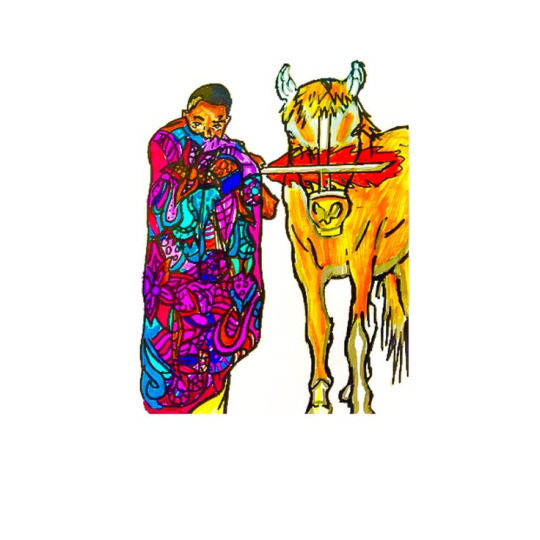
The King and His Steed
#The King and His Steed#CulturalArt#Heritage#NomadicLife#SymbolicArt#PopArt#HandDrawn#StreetwearAesthetic#ArtisticExpression#DopeIllustration#ColorfulCreativity#Contemplation#IndigenousInspired#SurrealElements#UrbanAesthetic#GalleryArt#MysticalEnergy#DeepVisuals#StorytellingThroughArt#BoldLines#InkAndMarker#EmergingArtist
2 notes
·
View notes
Text
Unleash Your Creativity with the Inked Soul Manta Vector Design
In an era where digital precision often eclipses artistic expression, finding a design that marries both is like discovering a hidden treasure. The Inked Soul Manta vector design does just that, blending the rich tradition of Maori art with the sleek precision of modern vector graphics.
The Essence of Maori Art
Maori art is renowned for its intricate patterns and profound symbolism. Each design element tells a story, representing cultural beliefs and ancestral heritage. The Inked Soul Manta captures this essence perfectly. Originating as a meticulously crafted ink drawing, this design maintains its authentic, hand-drawn feel even in its vector form. This ensures that every curve and detail retains the soulful touch of the original artwork.
A Comprehensive Design Package
The Inked Soul Manta comes as a versatile and convenient package, offering multiple file formats to cater to diverse creative needs. Upon unzipping the file, you'll have access to SVG, AI, EPS, PNG, JPEG, and PDF formats, all optimized for high-quality output. This range of formats ensures compatibility with various design software and project requirements, making it an indispensable tool for any designer.
Endless Creative Possibilities
The true power of the Inked Soul Manta lies in its versatility. This design can be seamlessly integrated into a multitude of creative projects. Here are some exciting ways to use this artwork:
Fashion and Apparel: Elevate your clothing line with t-shirts, hoodies, and accessories featuring the unique Maori-inspired manta ray.
Interior Design: Add a touch of cultural elegance to your space with wall murals, tapestries, and decals.
Everyday Items: Customize mugs, cups, and even furniture pieces, turning ordinary objects into extraordinary works of art.
Artistic Ventures: Ideal for creating tattoos, stickers, flags, and more. Let your imagination be your guide!
Optimized for Excellence
Every file included in the Inked Soul Manta package has been thoroughly optimized and verified for quality. This means that whether you're printing a large-scale mural or a small decal, the design will maintain its integrity and detail, ensuring a professional finish every time.
Commercial Freedom
For entrepreneurs and creatives looking to monetize their work, the Inked Soul Manta offers significant commercial use flexibility. You can incorporate this design into products for sale, allowing you to expand your business with unique and eye-catching items. However, direct resale of the files or the original artwork is prohibited, ensuring the exclusivity and integrity of the design.
Ethical and Respectful Use
While the Inked Soul Manta is a powerful design tool, it's essential to approach its use with respect for its cultural origins. Maori art is rich in symbolism and tradition, and using it ethically means acknowledging and honoring its cultural significance. By doing so, you not only create beautiful work but also pay homage to the rich heritage from which this art form originates.
The Inked Soul Manta is a rare gem in the world of digital design. It bridges the gap between traditional hand-drawn artistry and modern vector precision, offering a versatile and powerful tool for creatives. Whether you're a designer, an artist, or an entrepreneur, this design will elevate your projects, infusing them with the spirit and beauty of Maori art. Dive into the depths of creativity with the Inked Soul Manta and let your artistic vision soar.
#InkedSoulManta#MaoriArt#VectorDesign#InkDrawing#CreativeProjects#GraphicDesign#ArtisticExpression#TShirtDesign#WallArt#CulturalArt
0 notes
Text
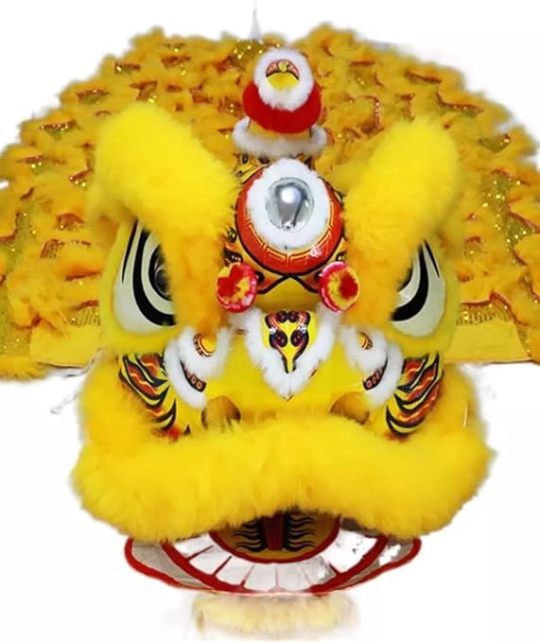
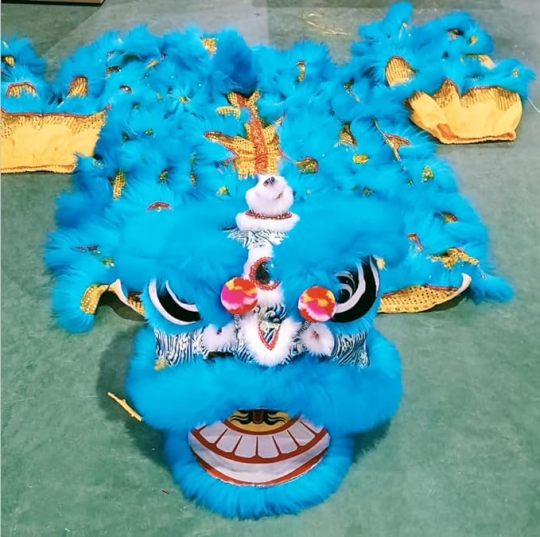
Lion Dance Costumes Props Head for Children Two Chinese Lion Dancing Performance New Year
USA FREE RETURN QUALITY PROBLEM, FURRYMASOCT MONEY BACK GUARANTEE. FURRYMACOT 100% ORIGINAL VIDEO & OEM STUDIO
#LionDance#ChineseNewYear#LionDanceCostumes#LionDancing#NewYearPerformance#CulturalCelebration#ChineseTradition#FestivalSeason#DanceProps#CulturalDance#TraditionalCostumes#CulturalHeritage#CelebrationOutfit#FestiveWear#TraditionalDance#PerformanceArt#LionDanceHead#YearOfTheLion#ChineseCulture#FolkDance#HolidaySpirit#FestiveSeason#AsianHeritage#CulturalEvents#LunarNewYear#CulturalArt#TraditionalPerformance#DanceCostumes#HolidayCelebration#CulturalProps
1 note
·
View note
Text

#HijabiArt #MuslimArtist #IslamicArt #HijabiGirlDrawing #ArtWithMeaning #ModestFashionArt #DigitalArt #ArtisticHijab #CulturalArt #WomenInArt #HijabInspiration #ArtisticExpression #MuslimCreatives #ArtForEveryone #HijabLove #CreativeHijabi https://youtu.be/1vFMjOOVsdU
#HijabiArt#MuslimArtist#IslamicArt#HijabiGirlDrawing#ArtWithMeaning#ModestFashionArt#DigitalArt#ArtisticHijab#CulturalArt#WomenInArt#HijabInspiration#ArtisticExpression#MuslimCreatives#ArtForEveryone#HijabLove#CreativeHijabi
0 notes